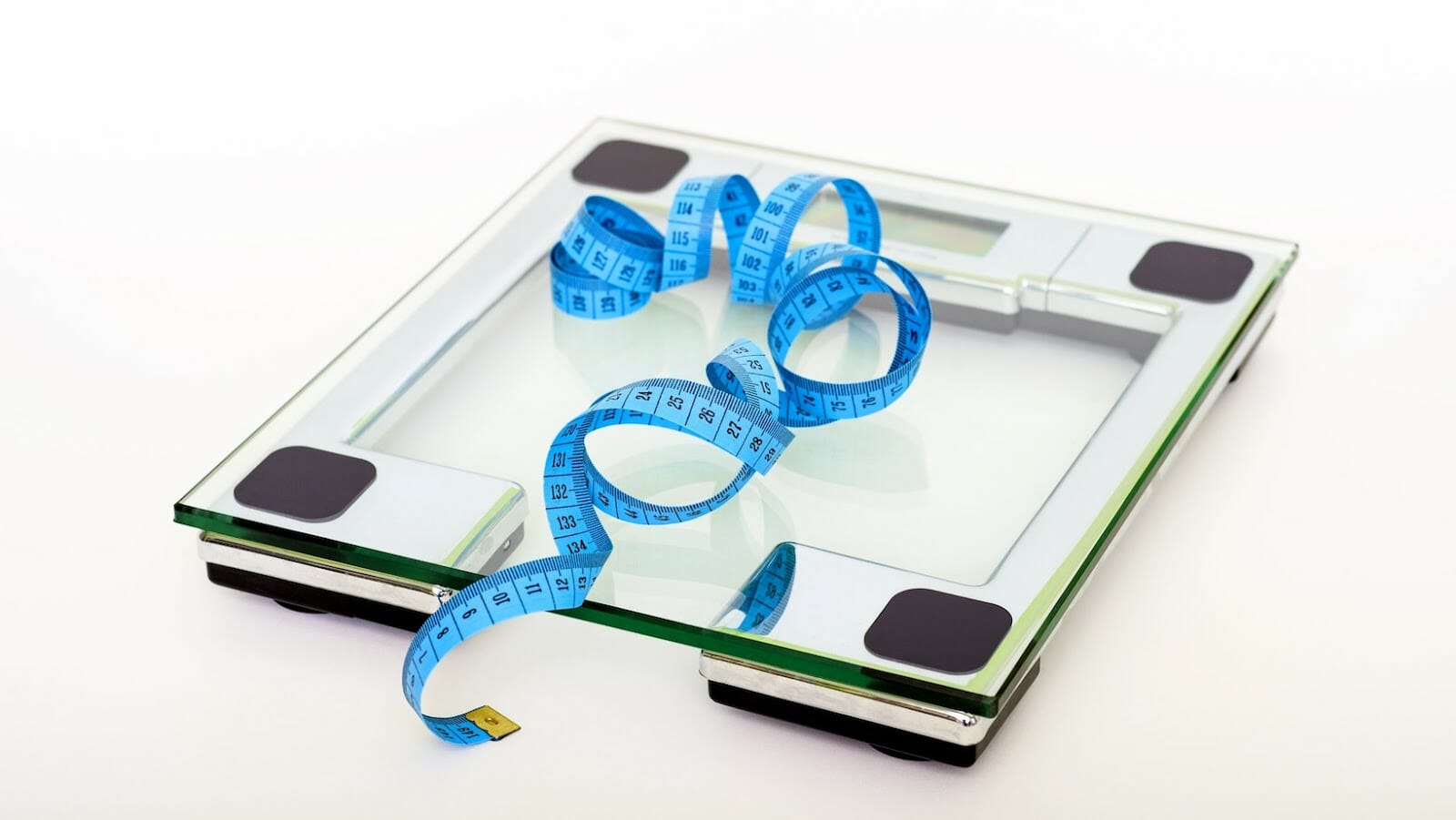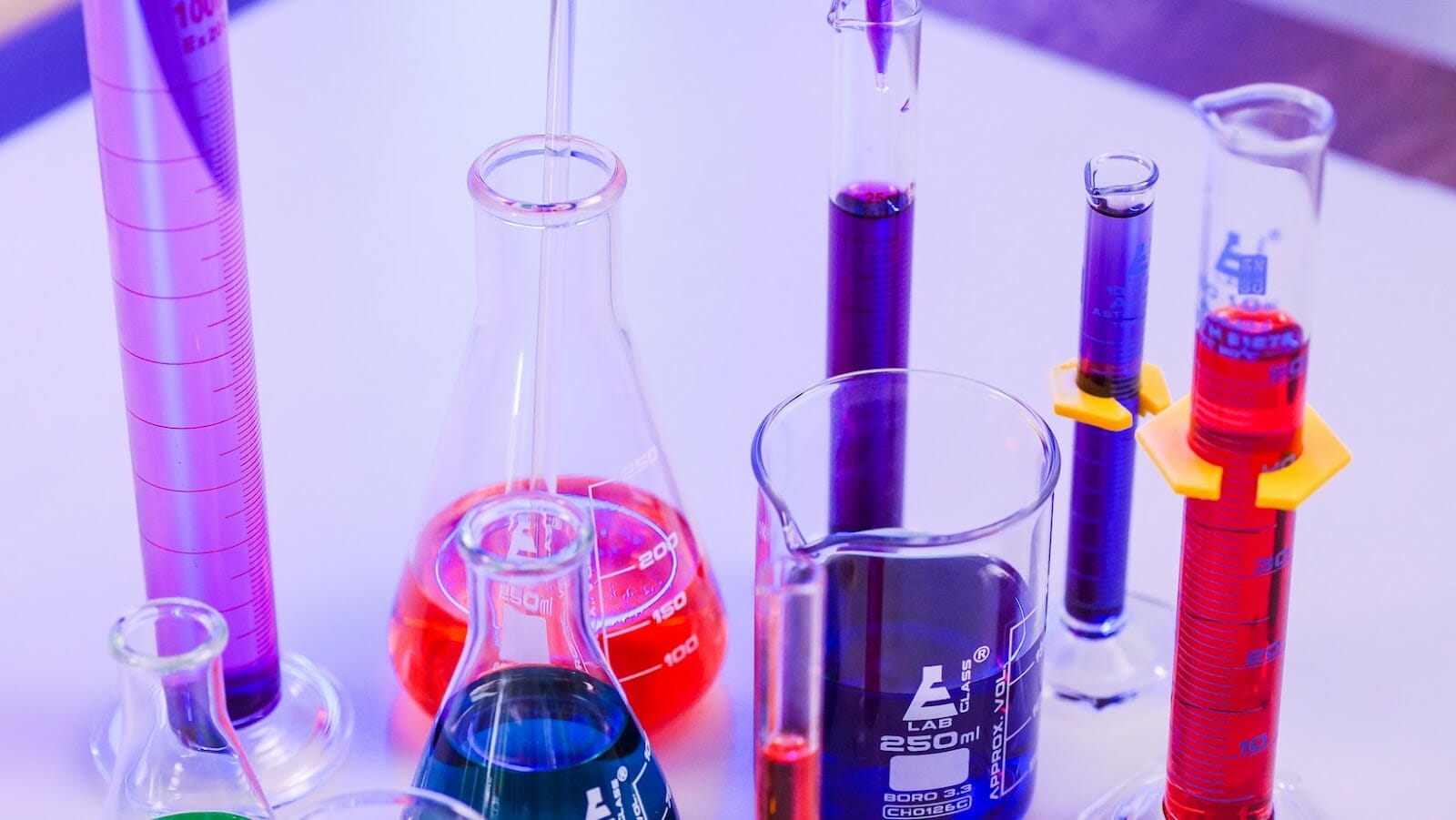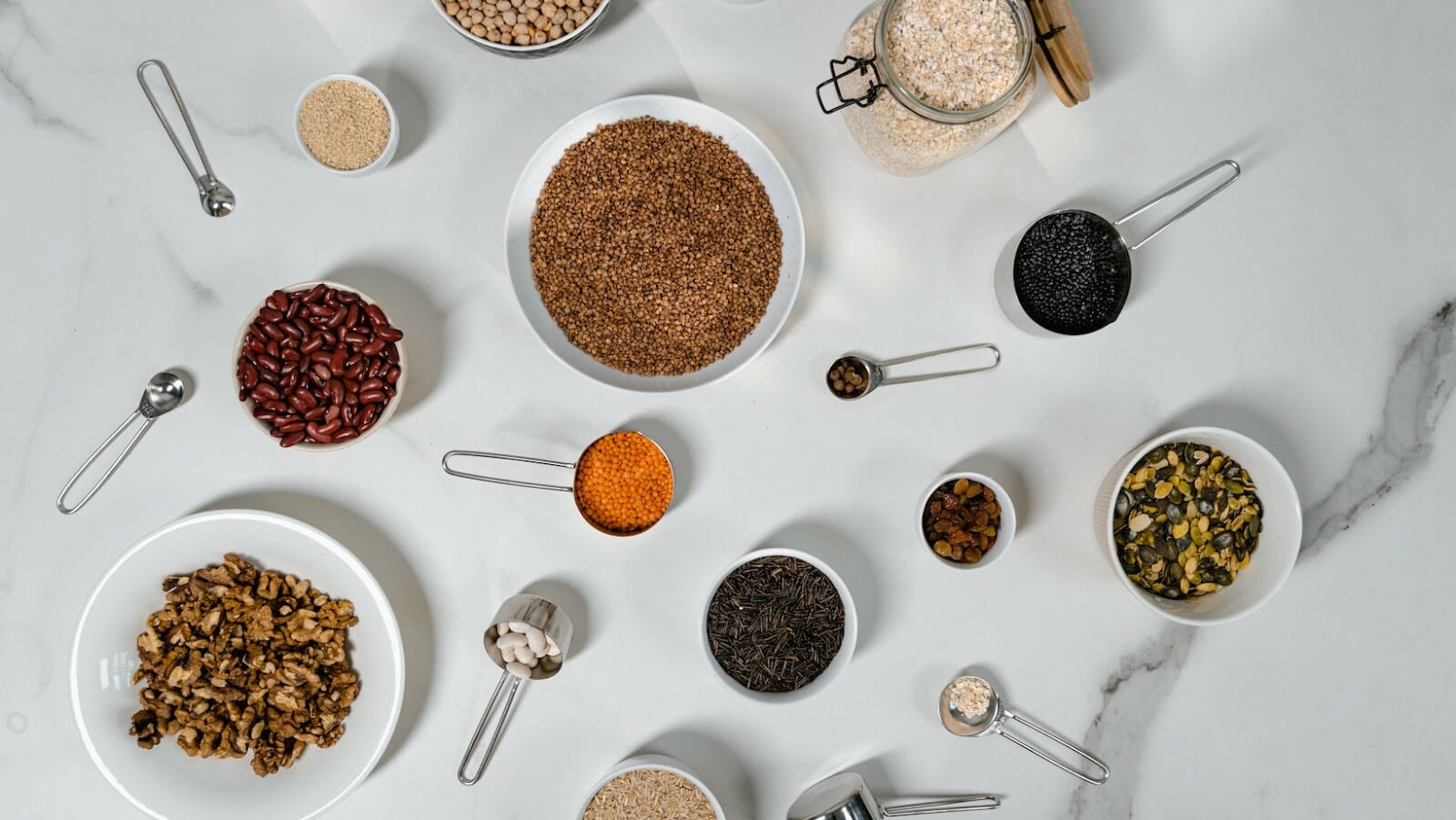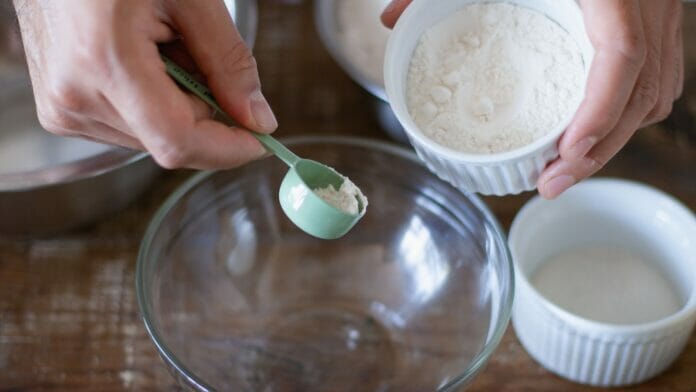There are 5,000 milligrams in a teaspoon. Therefore, knowing this measurement conversion is essential when cooking and baking as it ensures precision and accurate dosing of ingredients.
Here are some other common measurements for reference:
1 gram = 1,000 milligrams
1 teaspoon = 5 milliliters
1 tablespoon = 15 milliliters
When reading a recipe, pay close attention to the units of measurement used and convert them as needed for accurate ingredient amounts. Use proper measuring tools such as spoons or a scale to ensure precise measurements.
Pro Tip: Level off measuring spoons and cups to ensure an exact measurement. Over-measuring or under-measuring ingredients can significantly impact the outcome of your dish or baked goods.
Understanding Teaspoons And Milligrams
Teaspoons and milligrams are two common units of measurement in many aspects of life. Therefore, for many tasks, it is important to understand how to convert between the two. Fortunately, making the conversion between teaspoons and milligrams is relatively simple.
In this article, we will explore how many milligrams are in a teaspoon, and provide some tips to help you remember this measurement quickly and easily.
Definition of Teaspoon
A teaspoon is a standardized measurement commonly used in cooking and baking to measure small amounts of dry or liquid ingredients. One teaspoon is equivalent to 5 milliliters or 5,000 milligrams.
To convert teaspoons to milligrams, multiply the number of teaspoons by 5,000. For example, 2 teaspoons would equal 10,000 milligrams.
For a more precise measurement, using a kitchen scale to measure the correct amount in grams or milligrams is helpful.
Knowing the correct measurement conversions is essential for accurate cooking and baking. A single tablespoon can make a significant difference in the taste and texture of your dish. Happy cooking!
Definition of Milligram
Milligram is a metric unit of measurement used to express the mass or weight of an object. One milligram is equal to one-thousandth of a gram or 0.001 grams. It is often used in the pharmaceutical industry to measure small doses of medications, such as a tablet or capsule.
When measuring cooking ingredients, it is important to understand the conversion between milligrams and teaspoons. For example, if a recipe calls for 500 milligrams of a particular spice, and you want to know how many teaspoons that equates to, you would need to use a conversion chart or calculator. Generally, one teaspoon equals approximately 5,000 milligrams, so you would need to use approximately 0.1 teaspoons of the spice to meet the recipe’s requirements.
Pro tip: For precise measurements and accurate cooking, invest in a good quality kitchen scale or spoons to ensure your ingredients are correctly measured.
Difference between Volume and Weight measurements
Volume and weight measurements are two distinct methods used to measure ingredients in cooking, and the difference between the two can be tricky to understand.
Volume measurements are used for ingredients such as liquids or small particles that settle uniformly. In contrast, weight measurements are used for dense or heavy ingredients that can’t be easily measured by volume.
A teaspoon is a volume measurement equivalent to about 5 milliliters, while a milligram is a weight measurement of one-thousandth of a gram.
Understanding the difference between these two methods is essential as it can significantly affect your recipe’s outcome. For instance, if one tablespoon of dried herbs is called for in the recipe, but you only have the fresh herb available, using a weight measurement will provide a better outcome.
You can easily convert milligrams to teaspoons and vice versa by knowing the density of the ingredient using online conversion tools.
Converting Teaspoons To Milligrams
If you’re trying to figure out how many milligrams are in a teaspoon, you’ve come to the right place. Converting teaspoons to milligrams can be useful for various reasons, from cooking to measurements for medication.
In this article, we’ll tell you all you need to know about converting teaspoons to milligrams and how to calculate this measurement.
Different Types of Substances
When measuring different types of substances, it’s helpful to know the conversion from teaspoons to milligrams for accurate dosing. Here’s a breakdown of common substance measurements:
Salt – 1 teaspoon of salt equals 5,000 milligrams (mg).
Sugar – 1 teaspoon of sugar equals 4,200 mg.
Baking powder – 1 teaspoon of baking powder equals 4,000 mg.
Caffeine – 1 teaspoon of caffeine powder equals 1,800 mg.
It’s important to note that the conversion from teaspoons to milligrams depends on the measured substance, as each has its unique density and weight. However, knowing the conversion can prevent incorrect dosing, crucial for substances like medication or caffeine.
Pro tip: Always double-check your measurements and use an accurate measuring tool to ensure correct dosing.

Converting Volume to Weight
Converting volume measurements like teaspoons to weight measurements like milligrams is crucial in cooking, especially regarding accurate ingredient measurement.
Here’s how to convert teaspoons to milligrams:
- Find the density of the ingredient in milligrams per teaspoon. You can find this information on the packaging or through a quick online search.
- Multiply the number of teaspoons needed in the recipe by the density to find the total weight in milligrams.
For example, if the density of salt is 5,000 milligrams per teaspoon and your recipe calls for 1 teaspoon of salt, you would multiply 1 by 5,000 to get 5,000 milligrams.
Knowing how to convert volume to weight measurements will make you a better cook and ensure your dishes turn out perfectly every time.
Pro tip: Invest in a kitchen scale for more accurate and consistent measurements.
Common Conversion Factors
Converting teaspoons to milligrams can be tricky, but knowing the common conversion factors can help simplify the process.
1 teaspoon = 5 milliliters
1 milliliter = 1 gram (when measuring water)
1 gram = 1000 milligrams
Using these conversion factors, we can determine that:
1 teaspoon of water = 5000 milligrams
1 teaspoon of salt = 5600 milligrams
1 teaspoon of sugar = 4000 milligrams
When converting ingredients with a different density than water, the conversion factor may differ slightly, but the basic principles remain the same.
Knowing these conversion factors can make calculating the appropriate amount of ingredients for your recipes or health needs easier.
Pro tip: Investing in a kitchen scale that measures in grams can eliminate the need for conversion.
How Many Milligrams In A Teaspoon
Converting milligrams (mg) to teaspoons (tsp) is a common measurement convertion that many people need to know. Learning how to do this can help with measuring out medication, baking, and more. So let’s go through the basics of converting milligrams to teaspoons and explore the easy steps to ensure you get the right measurement.
Different Types of Substances
Different types of substances may require different conversions when converting milligrams to teaspoons.
Generally, one teaspoon can hold approximately 5 milliliters (mL) or 5,000 milligrams (mg) of liquid or solid substances. However, this may vary depending on the substance’s density, viscosity, and weight. For example, one teaspoon of salt may weigh less than one teaspoon of honey, even though they occupy roughly the same volume.
To convert milligrams to teaspoons, divide the number by the substance’s density or weight (in milligrams/teaspoon) to get the exact measurement. Alternatively, you can use an online conversion tool to simplify the process.
It’s important to note that accuracy in measurement and conversion is crucial, especially when dealing with medications or supplements that require precise dosage. Always consult a healthcare provider or a pharmacist for guidance.
Converting Weight to Volume
Converting weight to volume can be a daunting task, especially when it comes to measuring ingredients for cooking or baking. When converting milligrams to teaspoons, the process is a bit more complicated as it depends on the density of the measured substance.
Water – 5000
Flour – 2500
Salt – 6000
Sugar – 4000
To convert milligrams to teaspoons, you must know the measured substance’s weight and density. Once you have this information, you can use an online conversion tool or manual calculation to determine the number of teaspoons needed.
Pro tip: Invest in a kitchen scale to accurately measure ingredients in your cooking and baking.
Common Conversion Factors
Converting milligrams to teaspoons can be tricky, but knowing the common conversion factors can simplify the process.
Here is the conversion factor for milligrams to teaspoons for substances with a similar density to water:
Milligrams (mg)
1
Teaspoons (tsp)
0.0002
To convert a certain number of milligrams to teaspoons, simply multiply the number of milligrams by 0.0002. For example, 500 milligrams would be equal to 0.1 teaspoons.
It’s important to note that the conversion factor may differ depending on the substance being measured, as substances can have different densities. A conversion calculator or consulting a knowledgeable source is recommended in these cases.

Tips And Tricks For Accurate Measurement Conversion
Accurate measurement conversion is essential for various tasks, such as cooking, science experiments, and engineering projects. Therefore, understanding how to convert between different measurement units is valuable in many situations.
This article will provide tips and tricks for accurately converting between measurements, focusing on converting milligrams to teaspoons.
Using Measuring Spoons and Weights
Accurate measurement of ingredients is crucial in cooking and baking. Measuring spoons and weights can make a significant difference when converting measurements from one unit to another.
Here are some tips and tricks for converting measurements accurately:
- Understand the basic units of measurement: Measurements in cooking and baking are typically done in grams and milliliters, and in the US, also in ounces, teaspoons, and tablespoons.
- Use a kitchen scale: Using a kitchen scale can help you be more precise in your measurements. For example, weighing ingredients is more accurate than measuring by volume since the density of ingredients can vary.
- Know the conversion rates: It’s essential to know the conversion rates between different units of measurement. For example, one teaspoon equals approximately 5 milliliters or 5,000 milligrams.
Pro Tip: When measuring ingredients, always use the appropriate tools and understand the basic units of measurement. This knowledge will help you accurately convert measurements and get the desired recipe results.
Understanding the Density of Substances
Density is a crucial factor in accurately converting measurements of substances. The density of a substance is defined as its mass per unit volume, and it can vary widely depending on the substance and its form.
Here are some tips and tricks for accurate measurement conversion when dealing with substances of different densities:
First, it’s important to know the density of the substance you are measuring. This information is typically available on the packaging or easily found online.
When converting volume measurements to weight measurements or vice versa, it’s crucial to use the density of the substance to make an accurate conversion.
For example, to convert teaspoons to milligrams, you need to know the density of the substance you measure in milligrams per teaspoon.
As a general rule, liquids have a higher density than solids or gases, so 1 teaspoon of a liquid typically weigh more than 1 teaspoon of a solid or gas.
Keep in mind that the density of a substance can change depending on factors such as temperature and pressure, so it’s important to use the most up-to-date information when making measurements.
Pro-tip: Investing in a kitchen scale can make measuring substances by weight much more accurate and efficient.
Double-checking Your Measurements
Double-checking your measurements is essential to ensure the success of any recipe. Follow these tips and tricks for accurate measurement conversion:
Use a kitchen scale: One of the most accurate ways to measure ingredients is by weight instead of volume. Invest in a kitchen scale to weigh your ingredients precisely.
Read the recipe carefully: Ensure you read the recipe instructions and measurements thoroughly before starting. Some recipes may use metric units or require you to use specific measuring tools, such as a tablespoon or a measuring cup.
Use standardized measuring tools: Standardized measuring cups, spoons, and other kitchen tools are designed to measure accurately. Avoid using regular cups or spoons from your kitchen, which may vary in size.
Convert units correctly: Accurate measurement conversion is crucial for any recipe. For example, if you’re wondering how many milligrams in a teaspoon, it’s important to know that one teaspoon is equivalent to 5,000 milligrams.
With these tips and tricks, you can measure your ingredients accurately and ensure your recipes are always perfect.

Conclusion And Recommended Tools For Measurement Conversion
Welcome to the conclusion of our exploration into the measurement conversion—how many milligrams in a teaspoon. In this section, we will cover some of the most helpful tools for measurement conversion.
We will be looking at the different types of calculators, converters, and other tools you can use to make the process of measurement conversion easier and faster. Let’s get started!
Summary of Key Points
In conclusion, knowing how to convert measurements is important when cooking or baking. Here are the key points to keep in mind:
– Converting measurements involves using ratios and basic math skills.
– To convert from teaspoons to milligrams, you need to know the measured substance’s density.
– Several useful tools are available for measurement conversion, such as online calculators and mobile apps.
Recommended tools for measurement conversion include:
– KitchenCalc recipe converter: a handheld device that converts between units of weight and volume for both dry and liquid ingredients.
– Kitchen unit converter app: a mobile app that allows you to convert between units of weight, volume, temperature, and more.
By using these tools to convert your measurements accurately, you can ensure that your recipes turn out just right every time.
Recommended Conversion Tools
Converting measurements from one unit to another can be a headache, but it can be effortless and even enjoyable with the right conversion tools. Here are three recommended conversion tools that will make the process quick and easy:
1. Unit Converter by UnitPot: This online tool offers a simple interface to convert any measurement unit, from milligrams to teaspoons. It also provides a comprehensive list of units, including rare and unique ones.
2. Convert Units: This tool offers conversion services for a wide range of units such as mass, length, volume, but also helps users learn more about how to do conversions themselves. In addition, the website offers step-by-step instructions on doing conversions manually.
3. Kitchen Calculator PRO: This app is designed for measurement conversions while cooking or baking. It converts units for liquids, weights, temperatures, volumes, and even has a unit conversion chart in case of a conversion emergency.
Now you can easily convert milligrams to teaspoons or any other units without hassle!
Final Thoughts
In conclusion, learning to convert measurements, such as understanding how many milligrams are in a teaspoon, is essential to any recipe. Using the right tools to achieve accurate measurements and ensure the dish’s success is important.
Various tools are available to make measurement conversion easy, such as digital kitchen scales and measuring spoons and cups. These tools are designed to provide precise measurements and can help avoid errors that may lead to recipe disasters.
It is also important to understand the measurement units used in a particular recipe and to convert them accurately. This can be done by consulting reliable measurement conversion charts and websites that provide accurate and up-to-date conversion rates.
By learning measurement conversion and using the right tools, you can become a confident and skilled cook who can easily tackle any recipe.
Pro Tip: Keep a set of measuring spoons and cups handy in your kitchen to make measurement conversion a breeze. Also, double-check your conversions to ensure recipe success.


